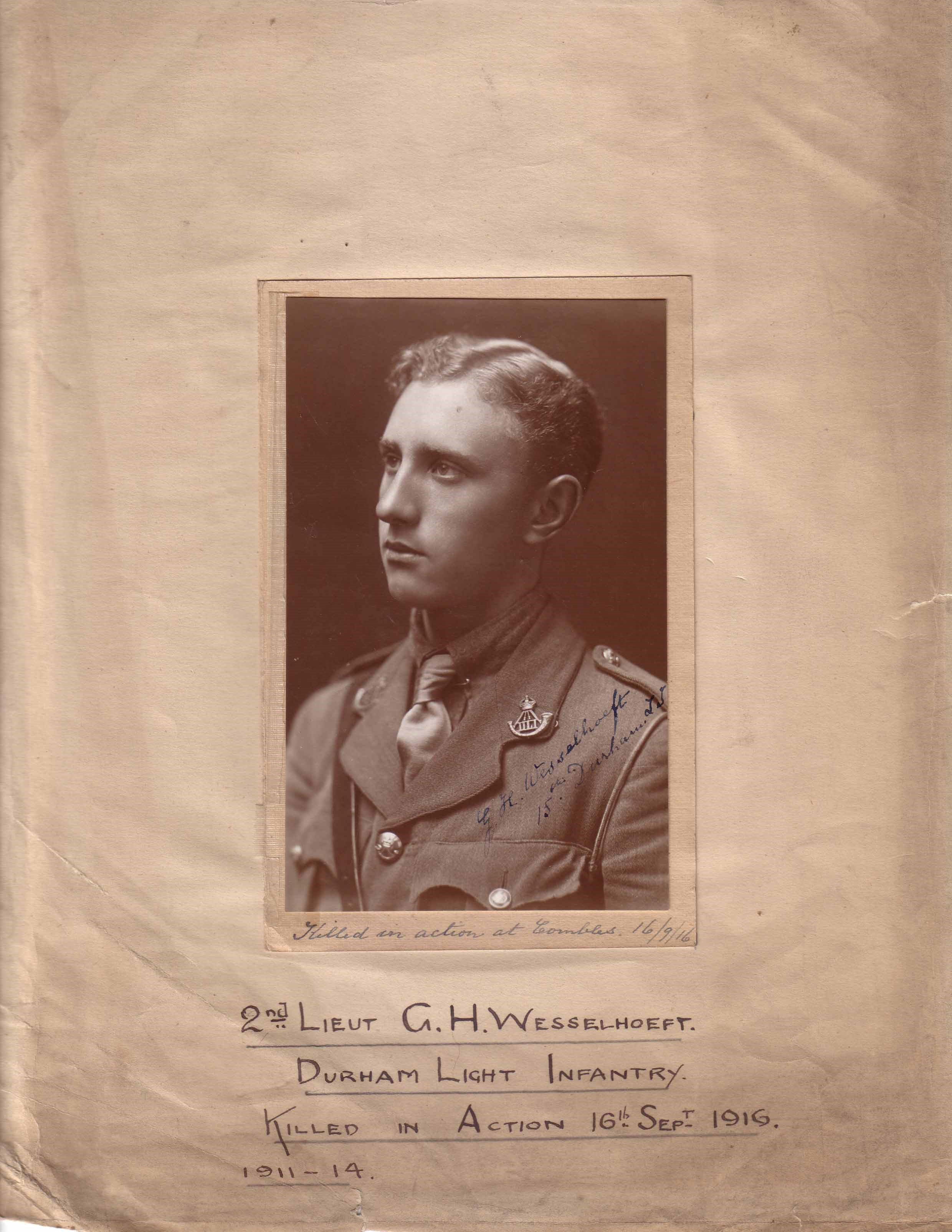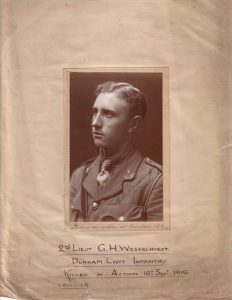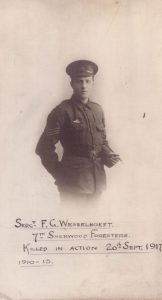
October 22, 2018, by Charlotte Anscombe
Nottingham in the war: The Wesselhoefts – a family of German descent fighting for Great Britain
As part of our series looking back at WWI, we look back at some of the students who studied at University College, later to become the University of Nottingham.
Here, we look at two young cousins who had strong German connections and distinctive German names, and who both lost their lives almost exactly a year apart fighting for Great Britain.
George Henri Wesselhoeft (1896-1916) is one of three German names on the College war memorial. He was born on 2nd November 1896 to George Vaughan Wesselhoeft and Julie Dorothea Wesselhoeft.
He had an older sister, Ethel Eleanor, who was born in Lubeck in 1896. Around the turn of the century, his grandmother, Mary Henrietta Wesselhoeft was also living in the family home at 1 Pelham Avenue, Nottingham.
George Henri attended Nottingham High School from January 1911 to December 1914. He joined the Durham Light Infantry and was killed in action on 16th September 1916 aged 19. His rank was Second Lieutenant.
George’s cousin, Frederic Grange Wesselhoeft was born in 1897 in Nottingham to Frederick and Ellen Wesselhoeft. Frederick had been born in Germany and naturalised as a British subject in 1905. Ellen was born in Glasgow. They married around 1890 and had a daughter, Muriel in around 1895.
The elder Frederick was in business as a printer’s furnisher at 46 Hounds’ Gate. The family were of German origin, but the father had been brought to England as an infant. There were still, prior to WW1, however, strong connections with Germany. The father founded the business in 1881 in London, but quickly made Nottingham his headquarters. The family lived at Hillhead, Arlington Drive, Nottingham.
Frederic Grange Wesselhoeft attended Nottingham High School from 1910 to 1913. According to the Nottinghamshire roll of honour, he joined the 2/7th Sherwood Foresters in September 1914 and proceeded to Ireland with his regiment, going through the Dublin Rebellion in April 1916. He served with the Expeditionary Force in France and Flanders from that September. He was transferred to the Royal Warwickshire Regiment and was killed in action at the Battle of the Menin Road, 20th September 1917.
He is listed as buried in the military cemetery near Ypres (however, he is now commemorated on the Tyne Cot Memorial to the Missing).
His Commanding Officer wrote: “He had served faithfully and willingly all the time, and is greatly missed by all who knew him”. One of his comrades stated “He was the best pal I ever had, liked by all, and greatly missed by all his company.” His final rank was Sergeant.
No comments yet, fill out a comment to be the first



Leave a Reply